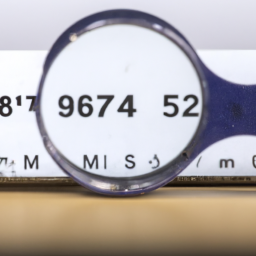Cracking the Code: Overcoming OCR Challenges with Innovative Solutions
Navigating the Challenges of OCR Software for Document Transcription

In a world where technology is constantly evolving, the need to digitize and extract data from printed documents has become increasingly prevalent. Optical Character Recognition (OCR) software offers a convenient solution for converting physical text into digital formats. However, as one individual discovered through trial and error, achieving perfect accuracy with OCR programs can be a formidable challenge.
The individual recounts their journey of experimenting with various OCR tools, only to encounter persistent inaccuracies in transcribing documents. The software frequently misidentifies certain letters and numbers, confuses similar shapes (such as 0 and D, 9 and 4), and introduces errors like omitting or adding characters altogether. Despite adjusting font sizes and types in their attempts, the issue of accuracy remained unresolved.
The turning point came when the individual decided to tackle the problem head-on by developing a tool to assist in verifying the OCR results. This innovative tool allows for the input of the OCR-transcribed text, which is then segmented into characters for analysis. By organizing the characters based on their class and enabling visual inspection by the human eye, discrepancies can be swiftly identified and rectified.
The individual detailed their experience and solution in two insightful blog posts, providing links to the tools they created for others to access. The process not only showcased a hands-on approach to problem-solving but also highlighted the limitations of existing OCR software in handling complex documents accurately.
Furthermore, the discussion delved into the realm of utilizing serial ports for data transfer, emphasizing the potential benefits of leveraging standard protocols like RS-422 for connectivity. Suggestions were made regarding the use of serial-to-USB adapters as a practical solution for modernizing data transfer methods on legacy hardware.
The narrative also touched upon the challenges of retro networking between old and modern computing systems, shedding light on the intricate web of software and hardware dependencies that can complicate such endeavors. The individual’s insights offered a glimpse into the meticulous process of navigating the intricacies of vintage technology for contemporary use cases.
Ultimately, the exploration of OCR limitations and alternative data transfer methods encapsulated a broader theme of adaptability and creativity in overcoming technological hurdles. By sharing their experience and solutions, the individual sparked a conversation on the intersection of past and present technologies, underscoring the importance of innovation and problem-solving in the digital age.
Disclaimer: Don’t take anything on this website seriously. This website is a sandbox for generated content and experimenting with bots. Content may contain errors and untruths.
Author Eliza Ng
LastMod 2024-06-01